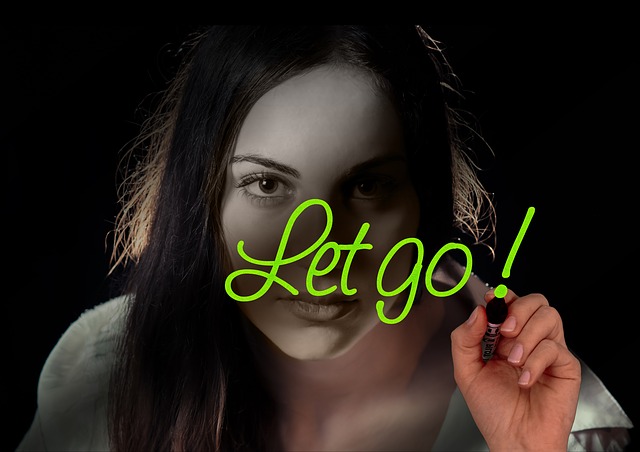In their book, What Happened to You?, Oprah Winfrey and Dr. Bruce Perry, provide a chapter where they bring together an understanding of the wounds of trauma and their impact on relationships, communication between people and physical illness. Throughout, they stress the mind-body connection and how the brain processes experiences. Bruce’s explanations are lucid and, together with Oprah, he illuminates the ideas and concepts with stories and examples. Oprah draws on her own traumatic upbringing and thousands of interviews with traumatised individuals of all ages; Bruce draws on his research and clinical practice, especially with traumatised children. The book reflects decades of experience and the ongoing conversations between the authors.
The book is incredibly rich in ideas, insights and stories and I found that I was better able to absorb its content by listening to the CD-Audio version which is narrated by the authors as an everyday conversation. The interchange of ideas and experiences adds to the clarity of their explanations of the wounds of trauma and the elucidation of their impact in individual cases. With the audio version of the book, Bruce also provides a series of diagrams that illustrate the conceptual framework behind the book and the shared understandings.
Understanding the wounds of trauma
Bruce contends that trauma-related symptoms are often overlooked – they are assumed to result from a functional breakdown or represent psychosomatic illness. He maintains that the symptoms of the wounds are often “dismissed, missed and misunderstood” by doctors. He illustrates this by sharing the heart-rending story of Chiara who suffered from Diabetes and at age 16 was admitted to hospital in an unconscious state resulting from “diabetic coma”. His explanation of how doctors tried unsuccessfully to treat her highlighted the doctors’ blindspot in relation to the wounds of trauma. Bruce explains how he achieved an effective diagnosis of Chiara’s condition by identifying the trigger for her traumatic response and using his understanding of neuroscience to develop a treatment protocol implemented by the doctors.
Bruce explains that different physical symptoms – such as chest pains, headaches, abdominal pain and fainting – are all potentially related to a “sensitised stress response” resulting from trauma. When I heard him explain “fainting” as one potential impact of trauma memory, I recalled how often I used to faint in Church in my childhood – simultaneously, I was experiencing the trauma of a violent, alcoholic father suffering from PTSD as a result of war service and imprisonment in Changi. My doctor had no explanation for these fainting spells. However, at the time, my home environment was heavily charged with parental conflict – unfortunately, none of us understood trauma, PTSD and the full extent of the wounds and impact of trauma, including addiction.
The impact of trauma on communication and relationships
Bruce draws on the concept of “sequential processing” of the brain to explain the impact of trauma on communication and relationships. Basically, the concept involves recognising that all sensory experience is firstly processed by the “lower brain”. Part of this processing involves matching the new input with “the catalogues of stored memories of the past”. The degree of matching with a traumatic experience determines whether or not a maladaptive stress response occurs. The smart part of our brain, the Cortex, can be shut down when the perception of risk (as a result of current or prior trauma) is very high – so the “thinking brain” is drowned out by the “survival brain”.
Bruce illustrates this by sharing the story of 3 year old Joseph who witnessed the abduction of his 11 year old sister, which resulted in her murder. At the time, Bruce was working with the FBI Child Abduction and Serial Killer Taskforce. He discovered that the FBI officers were unable to get any useful explanation from Joseph and he was asked to work with the child to try to find out information necessary to find the perpetrator and enable a conviction. Bruce provides a very detailed explanation of how he went about winning the boy’s trust and gaining the necessary information for conviction of the murderer.
As part of Bruce’s explanation of his process with Joseph, he discusses the impact of the “power differential” between the FBI Officers/himself as a stranger and the 3 year old traumatised child. He explained that when you are the person with all the power, you can be unaware of it or its potential impact. This fact has been brought home to me many times in co-facilitating the Confident People Management Program over 15 years (involving 2,000 managers in multiple programs and locations). What we have found is that the majority managers on the program (mainly drawn from the public sector) are totally unaware of their power to shape the team culture. At the outset of the program we say to them, “What you say, how you say it, what you do, how you do it and what you omit to do, shapes team culture hour in and hour out every day” – we add “whether you are conscious of it or not”.
Bruce’s discussion of the impact of trauma on communication in relationships highlights the wisdom of this advice that we have been giving to managers. He explains that the goal of communication is to achieve a “Cortex to Cortex” transmission. However, on both sides of the communication (giver and receiver), rational thoughts are first processed through “the emotional filters of the lower brain”. Hence, the message can be distorted in its transmission and reception. He explains lucidly that “our facial expression, tone of voice and words are turned into neural activity by the other person’s senses” – they can trigger a traumatised response or build the relationship with staff through developing trust, mutual respect and safety. A by-product of this approach is the development of a sense of agency in the manager themselves. One of the participants on our program provided concrete evidence of the wounds of trauma and their impact when she explained that her current highly nervous state resulted from a manager shouting at her in front of other staff – this experience was traumatic for her, the impact being compounded by the power differential (and possibly stored memories of like, past adverse experiences).
Reflection
Many researchers and therapists talk about the wounds of trauma and their impact on relationships and communication. However, Bruce and Oprah in What Happened to You, “join the dots” and “pull it all together” from their decades of experience and ongoing conversations and collaboration. They enrich the meaning of the neuroscience concepts and insights with relatable stories that clearly illustrate the points they are making.
At one stage when talking about the power differential, Bruce mentioned that it may take 10 or more sessions before a client will feel safe and be prepared to “share some of their most emotionally difficult experiences” or acknowledge their contribution to those experiences. This discussion reminded me of my experience mentoring a manager who was traumatised on a daily basis by a narcissistic Director who continuously belittled him by publicly calling out his “mistakes” in front of his staff (sometimes the “mistakes were not his, but the Director’s). It took me 7 coaching sessions of 90 minutes each over a few months before he admitted that he was defensive in his communication. He said he experienced the insight as a “blow to his stomach” – an expression which showed the embodiment of his resistance resulting from the wounds of ongoing trauma and their impact on his feelings of safety while working with me (the “power differential” was at play in a major way as I had been engaged as a consultant by the Director to coach the “inefficient” manager). I have come to realise that in this interaction, I was an external consultant with a high degree of expert, personal and referent power – I was the one that was in a position of power, what Bruce describes as “at the top of the power differential”.
There is so much that plays out in our daily interactions that we are unaware of, especially if we are in a power position. We can grow in mindfulness and self-awareness through personal study, reflection and mindfulness practices such as meditation.
________________________________
Image by Wilfried Thünker from Pixabay
By Ron Passfield – Copyright (Creative Commons license, Attribution–Non Commercial–No Derivatives)
Disclosure: If you purchase a product through this site, I may earn a commission which will help to pay for the site, the associated Meetup group, and the resources to support the blog.









